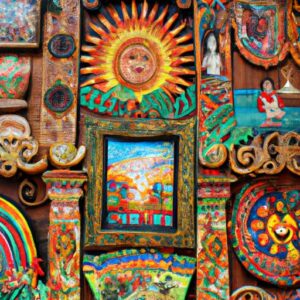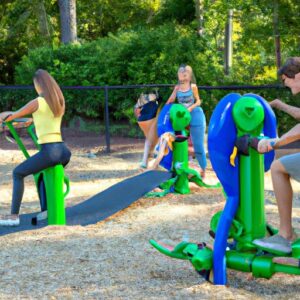Introduction
Recreation is an essential aspect of human life, allowing us to unwind, rejuvenate, and find joy in our daily routines. But what exactly does human recreation mean? In this article, we will delve into the definition of human recreation and explore its importance in our lives.
A. Definition of Human Recreation
Human recreation refers to the activities and pursuits that individuals engage in for leisure, enjoyment, and personal fulfillment. It encompasses a wide range of activities, including sports, creative hobbies, outdoor adventures, and entertainment. The key aspect of recreation is that it is voluntary and chosen by individuals to relax, have fun, and escape the pressures of everyday life.
B. Importance of Understanding Human Recreation
Understanding human recreation is crucial as it plays a significant role in enhancing our overall well-being. Engaging in recreational activities not only provides physical and mental benefits but also contributes to stress reduction and building social connections. By exploring the meaning and significance of human recreation, we can gain insights into how we can incorporate it into our lives to lead happier and more fulfilling lifestyles.
So, let’s embark on this journey together to uncover the true essence of human recreation and discover how it can positively impact our lives.
The Significance of Recreation in Human Life
Recreation holds immense significance in our lives, offering a multitude of benefits that contribute to our overall well-being. Let’s explore the various ways in which recreation impacts us.
A. Physical and Mental Benefits of Recreation
Engaging in recreational activities has numerous physical benefits. Whether it’s playing a sport, going for a hike, or simply taking a walk in the park, recreation promotes physical fitness and improves cardiovascular health. Regular exercise through recreational activities helps in maintaining a healthy weight, reducing the risk of chronic diseases, and enhancing overall physical strength and endurance.
Moreover, recreation also plays a crucial role in promoting mental well-being. It has been proven to reduce symptoms of anxiety and depression, boost mood, and improve cognitive function. By participating in recreational activities, we can release endorphins, which are natural mood enhancers, and experience a sense of accomplishment and happiness.
B. Role of Recreation in Stress Reduction
In our fast-paced and demanding lives, stress has become a common occurrence. Recreation offers an effective way to alleviate stress and unwind. Engaging in activities we enjoy helps to divert our attention from daily worries and responsibilities, providing an escape from the pressures of life. Whether it’s playing a musical instrument, painting, or practicing yoga, recreation allows us to relax, recharge, and find a moment of tranquility amidst the chaos.
C. Enhancing Social Connections through Recreation
Recreation acts as a catalyst for building and strengthening social connections. Participating in recreational activities often involves interacting and collaborating with others who share similar interests. This fosters the development of friendships, creates a sense of belonging, and enables us to expand our social networks. Whether it’s joining a sports team, attending art classes, or participating in community events, recreation provides opportunities for social engagement and meaningful connections with others.
By recognizing the significance of recreation in our lives, we can actively incorporate it into our routines and reap the multitude of benefits it offers. So, let’s continue our exploration of human recreation and unveil its various forms and influences in the next sections.
Understanding the Different Forms of Human Recreation
Recreation comes in various forms, catering to the diverse interests and preferences of individuals. Let’s explore some of the different categories of human recreation that offer unique experiences and opportunities for personal growth.
A. Sports and Physical Activities
Engaging in sports and physical activities is a popular form of recreation for many individuals. Whether it’s playing team sports like soccer or basketball, participating in individual activities like running or swimming, or even trying out adventurous pursuits like rock climbing or martial arts, sports and physical activities offer numerous benefits. They promote physical fitness, enhance coordination and agility, and boost overall well-being. Moreover, participating in sports fosters a sense of teamwork, discipline, and healthy competition.
B. Creative and Artistic Pursuits
For those inclined towards artistic expression, engaging in creative pursuits is a fulfilling form of recreation. This category encompasses activities like painting, drawing, sculpting, writing, playing musical instruments, and dancing. Creative outlets not only allow individuals to express themselves but also provide a therapeutic and meditative experience. These artistic endeavors stimulate the mind, foster self-discovery, and enable personal growth.
C. Outdoor and Nature-related Recreation
Spending time outdoors and immersing oneself in nature is a rejuvenating form of recreation. Activities such as hiking, camping, birdwatching, gardening, or simply enjoying a leisurely walk in the park provide a much-needed connection with the natural world. Outdoor recreation offers a chance to escape the hustle and bustle of daily life, breathe in fresh air, and appreciate the beauty of the environment. It promotes physical fitness, reduces stress, and instills a sense of tranquility and mindfulness.
D. Entertainment and Leisure Activities
Entertainment and leisure activities encompass a wide range of recreational pursuits that provide enjoyment and relaxation. This includes watching movies or TV shows, attending live performances or concerts, playing video games, reading books, or even engaging in hobbies like cooking or collecting. These activities offer a break from the routine and allow individuals to unwind, explore new interests, and immerse themselves in the world of entertainment.
By understanding the different forms of human recreation, we can identify the activities that resonate with us the most and craft a well-rounded recreational lifestyle that brings us joy and fulfillment. So, let’s embrace the diversity of recreational opportunities and embark on exciting journeys of self-discovery and leisure.
The Evolution of Human Recreation
Recreation has evolved over time, adapting to changes in society, culture, and technology. Understanding the evolution of human recreation provides valuable insights into how our recreational activities have transformed throughout history.
A. Historical Perspective on Recreation
Throughout history, recreation has been an integral part of human existence. In ancient civilizations, recreational activities were often intertwined with religious rituals and celebrations. From the athletic competitions of ancient Greece to the extravagant festivals of the Renaissance era, recreation has served as a means of entertainment, socialization, and cultural expression.
As societies progressed, recreation began to encompass a broader range of activities. The industrial revolution brought about more leisure time for the working class, leading to the emergence of organized sports, parks, and other recreational facilities. The notion of leisure and recreation as fundamental rights gained prominence in the 20th century, with governments and organizations recognizing the importance of providing opportunities for individuals to engage in recreational pursuits.
B. Cultural Influences on Recreation
Cultural influences shape the types of recreational activities that individuals partake in. Different cultures have their unique forms of recreation, reflecting their traditions, values, and social norms. For example, traditional dances, music, and art forms are central to recreation in many cultures, showcasing their rich heritage and promoting communal bonding.
Moreover, globalization has also influenced the evolution of recreation by introducing new forms of entertainment and activities from around the world. The fusion of cultural elements has given rise to innovative and diverse recreational experiences, allowing individuals to explore different traditions and broaden their horizons.
C. Technological Advancements and Recreation
Technological advancements have had a profound impact on the evolution of recreation. The advent of television, cinema, and the internet has revolutionized the way we engage in recreational activities. We can now enjoy virtual reality gaming, stream our favorite shows and movies, and connect with people from different parts of the world, all from the comfort of our homes.
Furthermore, technology has also expanded the possibilities for outdoor recreation. From GPS devices that aid in navigation to wearable fitness trackers that monitor our physical activity, technological innovations have enhanced our outdoor experiences, making them safer, more accessible, and enjoyable.
As we continue to progress, it is fascinating to witness how technology will further shape the landscape of human recreation, offering new avenues for exploration and enjoyment.
By understanding the historical, cultural, and technological influences on human recreation, we can appreciate how it has evolved into the diverse and dynamic phenomenon that it is today.
Factors Influencing Human Recreation Choices
When it comes to choosing recreational activities, several factors come into play. Understanding these factors can help us make informed decisions and tailor our recreation choices to our individual preferences and circumstances. Let’s explore some of the key factors that influence human recreation choices.
A. Personal Preferences and Interests
One of the primary factors that influence our recreation choices is our personal preferences and interests. Each of us has unique tastes and inclinations that shape the activities we find enjoyable. Some may prefer engaging in high-energy sports like basketball or hiking, while others may find solace in artistic pursuits such as painting or playing a musical instrument. By recognizing our personal preferences, we can find activities that align with our passions and bring us a sense of fulfillment and joy.
B. Socioeconomic Factors and Recreation
Socioeconomic factors also play a significant role in shaping our recreation choices. Our financial resources, social status, and access to recreational facilities can influence the types of activities we can participate in. For example, individuals with higher incomes may have more opportunities to engage in expensive hobbies like golfing or skiing, whereas those with limited financial means may opt for more affordable options such as walking or cycling. Additionally, cultural norms and societal expectations can also impact the recreational choices we make.
C. Environmental Factors and Recreation
The environment in which we live and the resources available to us can greatly influence our recreation choices. The geographical location, climate, and natural surroundings can inspire specific activities or limit our options. For instance, individuals residing near coastlines may be inclined to participate in water-based activities like surfing or swimming, while those in mountainous regions may be drawn to hiking or skiing. Moreover, the availability of recreational facilities, parks, and community centers also influence the range of options accessible to individuals.
By considering these factors, we can better understand the influences that shape our recreation choices. Acknowledging our personal preferences, socioeconomic circumstances, and environmental factors can help us curate a diverse range of recreational activities that cater to our unique needs and interests. So, let’s embrace the factors that impact our recreation choices and create a fulfilling and enjoyable recreational journey.
Conclusion
Recreation is not just a luxury; it is a vital component of a well-rounded and balanced life. Throughout this article, we have explored the meaning of human recreation and its significance in our lives. By understanding the importance of recreation, we can make informed choices to incorporate it into our daily routines.
A. Importance of Embracing Human Recreation
Embracing human recreation offers numerous benefits to our physical, mental, and emotional well-being. It allows us to escape the monotony of our daily lives, reduce stress, and recharge our batteries. Engaging in recreational activities provides an outlet for self-expression, creativity, and personal growth. It helps us maintain a healthy work-life balance and prevents burnout, ultimately leading to increased productivity and happiness.
B. Encouraging a Balanced Approach to Recreation
While recreation is essential, it is vital to strike a balance in how we approach it. Moderation is key. By finding a balance between work, responsibilities, and recreation, we can enjoy the benefits of recreation without neglecting our obligations. It is crucial to allocate dedicated time for recreation and prioritize activities that bring us joy and fulfillment.
C. The Ongoing Evolution of Human Recreation
As society evolves, so does the concept of human recreation. Technological advancements have expanded the possibilities for recreation, offering new avenues such as virtual reality experiences and online gaming communities. Cultural shifts and changing societal expectations also influence recreational choices. By staying open to new experiences and embracing emerging trends, we can continue to evolve and adapt our recreation choices to suit our ever-changing world.
In conclusion, human recreation holds immense value in our lives. It nourishes our physical and mental well-being, fosters social connections, and allows us to explore our passions and interests. By prioritizing recreation and finding a healthy balance, we can lead happier, more fulfilling lives. So, go ahead and indulge in the activities that bring you joy, and remember to make time for recreation in your journey towards self-discovery and personal growth.





